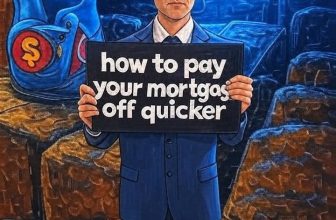(October 30, 2021)
Intro (pre-amble): up to 7:35 mark of podcast (Buying a home while selling your current one | Canada set to increase mortgage rates in 2022 | current 5yr & VRM rates)
The transition from selling one property to purchase another sounds simple, but there are a few critical events throughout the timeline that you need to be aware of.
Here are 6 key points to know when scaling up from one property to another:
(1) perhaps the biggest dilemma: SELL first, then BUY, or BUY first, then SELL?
There’s neither a right or wrong answer. If you are making a cash purchase and are not at all reliant on the proceeds from the sale of your current property to acquire the newly purchased one, then this is a non-issue (lucky you!). Otherwise, the starting point for your game plan should begin with your numbers guy/gal, your mortgage broker. For these types of transactions a mortgage broker should stress test your pre-approval to see if it endures the unlikely event that you are not able to sell your current property. By stress testing your pre-approval you will know if you are capable of carrying two mortgages should you have to hold out for a prolonged period of time until your previous property sells. Whatever you do, don’t just place an offer not knowing what your consequences are. Call your broker or banker and ask that they stress test your pre-approval.
(2) Use a Bridge Loan so you can gracefully transition from one property to another!
Most often when people are scaling up to purchase a bigger home, they require some or all of the proceeds from the sale of their current home to purchase the new home. Many assume that the completion date for both transactions (the sale of your old home, and the purchase of your new home) need to line up on the same day so as to accommodate the flow of proceeds from the sale to the purchase on the same day. This is true, for the most part, but what many aren’t aware of is that you can actually coordinate the closing dates so you can technically own both of the homes for a limited period of time, thereby allowing you to gracefully move out of your former property and into your new home within a span of a few days. Bridge Financing Loans allow you to do this and are conveniently available by the lender that secured the mortgage on your new place! Imagine closing on your new home on Friday and still having access to your former home for another few days so you can conveniently move your possessions from one place to the other with little or no stress at all. Much better than trying to orchestrate everything on the same day and potentially risk being homeless for a few days in the event there are some financing, registration or servicing delays (it happens!). For more information on Bridge Financing, Click Here to be redirected to a past blog where I explain the concept in greater detail.
(3) Consider porting your mortgage, but ONLY if it makes sense!
If you currently have an amazing interest rate on your mortgage and are wondering if you can transfer that same amazing rate/mortgage to your new house – the answer is yes! Or, you may want to keep the existing mortgage intact as the break penalty is abnormally high. Whatever your reason is, there is a built-in mortgage mechanism that allows you to do this, it’s called Porting. In some instances you can maintain the exact interest rate that you currently have, but in many other instances you will be offered what’s known as a blended interest rate. The Blended Rate may very well do the trick when you factor in the money you save by not paying the exorbitant break penalty, but other times it can prove more costly as the prevailing interest rates may be a better route. Porting is complex and unique to every lender and is definitely worth considering, but be sure to analyse the proposal offered to you by your lender very carefully as it doesn’t always make good financial sense. For more information on Porting a mortgage, Click Here to be redirected to a past blog where I explain the concept in greater detail.
(4) secure a Home Equity Line of Credit on your current property BEFORE you list it for sale
A Home Equity Line of Credit (aka HELOC) is by far the most flexible mortgage product available. Just like a personal line of credit, you only pay on the balance that’s drawn, but where it outperforms the personal line of credit is by only requiring interest only payments and at a much lower interest rate. For example, for a $50,000 Personal Line of Credit your monthly payment could equate to as high as $1,500 whereas with a HELOC it would be ~$125 per month! The HELOC could come in handy during the offer stage on your new property when a deposit is required to secure the offer (especially if you’re considering a hefty deposit as part of your aggressive offer strategy), or you can also use it later in the process in place of or in cooperation with a Bridge Financing application. Whatever the case may be, HELOCs come in handy and are a great transitory pool of funds to have available during a scale up real estate transaction. Heads up though, it is important to apply for and implement your HELOC on your current property BEFORE you formally list your property for sale as lenders do not proceed with financing when a property is listed for sale
(5) call your existing lender and find out what your current mortgage balance and discharge fee will be
When it comes to real estate, there’s nothing worse than the unexpected. Probably the first thing you should do when you consider scaling up is to call your current lender and review your balance and discharge fee (or commonly referred to as the break penalty). I know you’re probably thinking…ok, obviously I’m aware of my mortgage balance and have accounted for it when calculating what my gross profit will be when I sell my property, and obviously I’m aware that my mortgage likely has a break penalty equivalent to 3 months of interest payments which I’ve also factored in to the net profit of my home sale. But here’s the thing, the 3 month interest break penalty or your mortgage is where things get interesting (no pun intended, but feel free to laugh out loud). Firstly, break penalties are not always determined using the three month interest rule. Secondly, if your current mortgage is a fixed rate term, your break penalty is determined by the greater of 3 months interest payments, or Interest Rate Differential – whichever is greater. So sometimes (especially in a decreasing rate environment) you may encounter an exorbitant penalty and this is likely a result of your IRD calculation being greater than your 3 months interest calculation. And one more thing when it comes to mortgage break penalties…they can change radically (for the better or worse) at any given time, especially in volatile rate environments like we are in now. Be in touch with your bank, or grant your mortgage broker authorization to frequently check in on your behalf with your lender to monitor the break penalty. And lastly, if you currently hold a variable rate mortgage then you avoid the potential for the IRD calculation altogether as variable rate mortgages calculate their break penalties using only the 3 months interest calculation!
(6) If you’re planning to scale up at a specified time in the future, renew your current mortgage with the end in mind
If your mortgage renewal is coming due shortly, but your plans to purchase are still a year or two out, then renew to a product that has friendly break terms. Rather than renewing into another 5 year fixed term consider a variable rate mortgage for the short haul or even look in to 1 or 2 year terms as either could potentially save you thousands of dollars in discharge fees when you eventually sell your home.
Contact Marko, he’s a Mortgage Broker!
604-800-9593 direct Vancouver (Click Here to schedule a call with Marko!)
403-606-3751 direct Calgary (Click Here to schedule a call with Marko!)
@markogelo (Twitter)
MarkoMusic (SoundCloud Account)…all podcast music tracks are performed and produced by Marko






